
My 70-Succulent Deck Collection
On this page and in my new video you’ll see how I pair treasured succulents with pots that perfectly present them. You’ll get time-tested tips on how to display and enjoy your own collection, including how to select containers, utilize sight lines and focal points, keep potted succulents healthy, and design so guests do a double-take (always a fun goal).
I have about 70 pots on my 250-square-foot deck. Here and in the video I give plant names and mention pot artists. Scroll down to see a gallery with plant IDs.
We succulent collectors invariably have a lot of small pots, many showcasing single specimens. I group small pots to get the same dramatic effect as large pots. One secret is to elevate some of the grouping.

Undersea themed pot atop a metal stand.
Evaluate Your Outdoor Area
I don't fill every square foot of my deck. Guests like to go to the railing and look at the view, so I leave space for them to do so.
The deck has Trex flooring so that moisture from pots doesn’t ruin it, like it did a former deck made of wood. Or maybe I should say I ruined the previous deck!
Options for protecting your wood deck include:
- Pot feet (numerous kinds)
- Pot risers, black rubber
- Metal pot stands to elevate pots
The above are from Amazon (links are affiliate). You also may be able to find them at garden centers. For small pots, I may use metal candle stands from thrift stores. (Note two of them in the photo below, mid-foreground.)
A main sight line from my kitchen is this grouping on the east side of the deck, which gets full morning sun. I provide shade and a backdrop for sun-sensitive plants with golden jade in a 5-gallon black plastic nursery pot. (I'm not a fan of plastic, but black calls almost no attention to itself.)

Pot grouping, east-facing
My L-shaped deck includes an outdoor table that seats four. I like round tables because you can always squeeze in another person. Even though glass needs frequent cleaning, IMHO it looks brighter and airier than wood, metal or stone.
A smaller corner table serves as a handy place to set dishes when dining outdoors. A bonus is it has a shelf visible through the glass. I use it to hold a shallow, round pot of variegated sansevierias. These "snake plants" thrive in a corner that gets no direct sunlight.

Variegated sanseverias in the corner table's circular shelf
Consider Sight Lines and Focal Points
Pay attention to how your deck or patio looks when viewed from inside your home through windows and glass doors. Here, I positioned three potted cacti so that sun makes their spines glow. I enjoy looking at them mornings from my kitchen.

Backlit plants
Focal points are what the eye is drawn to, so aim for pleasing repetitions of color and texture. Avoid emphasizing utilitarian objects like drain spouts or trash bins. A well positioned focal point can actually downplay such things, because it makes the eye linger.
Echeveria pots outside my dining room window get better and better. See how I planted them several years ago. If you already grow echeverias, do watch my video on how to repot and refresh them. Mine are in lightweight plastic pots that look ceramic.
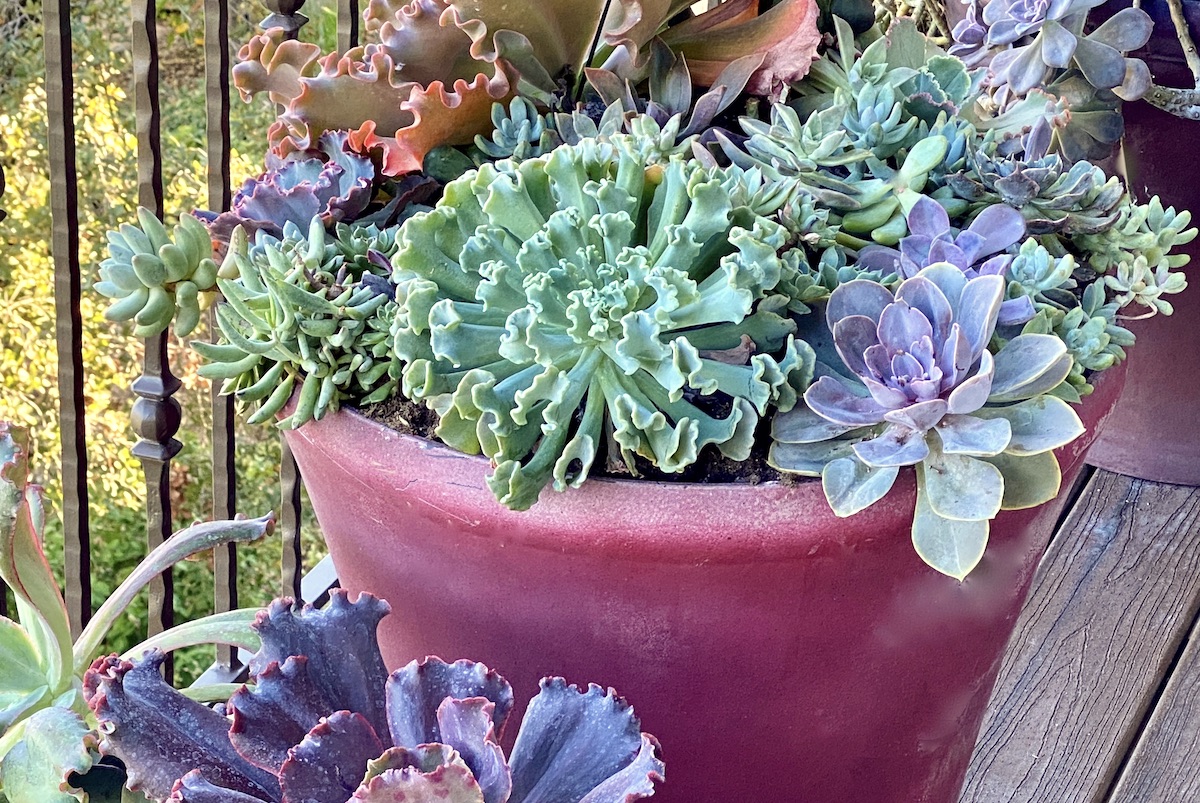
Echeveria collection. This year I added Echeveria ‘Arctic Lace’, a new introduction from Altman plants.
Create Continuity
Your containers don’t have to be all the same, in fact, it’s more interesting if they’re not. But it’s smart from a design standpoint if pots have elements of similarity. About a third of mine are one-of-a-kind pots by artists who sell at Cactus & Succulent Society Shows (find links below). Others were gifts or thrift-store finds that I drilled drain holes into. A few came from garden centers.
Stick to a color scheme that works with the setting and echoes colors found within the same sight line. My deck pots are mainly blue, red, green and brown, plus terracotta which goes with everything. No pot has a strong pattern or color that might detract by standing out too much.
To enhance visual continuity throughout my collection, I cover bare dirt with a topdressing of warm-toned pebbles. If you live near a rock supplier that sells retail, buying a 20-pound bag of pebbles from them is much cheaper than ordering online. Atop a few pots, I added glass marbles for a little extra bling and to create interest without being flashy.

Glass marble topdressing
Collect Pots As Well As Plants
Some of the best succulent pot artists also collect succulents. Because they create pots for their own plants, they have a good sense of scale, proportion, size, glaze colors, textures and how the pots will look when grouped.
Artists whose work I collect include:
- Regina Fernandez of Port Town Pottery
- Pat Roach of Pottery by Patrice
- Alicia Iraclides of Potted Arts
- Alison Myers Baldwin of Sea Garden Pottery
- Susan Aach Ceramics
- Pottery by Kitoi
- Jim Gardner
- Others who sell (or have sold) at Cactus & Succulent Society Shows.
As a collector friend says, “The plant has to earn its pot.” If this concept speaks to you, you'll enjoy watching me pair one-of-a-kind, artist-designed pots in YouTube videos.

Pots by Patrice
Understand Light
A well done deck or patio garden showcases your potted collection while ensuring that each plants’ requirements are met. The degree, intensity and even duration of sunlight varies throughout the year. It makes a difference in how your plants grow and look their best year-round.
So, be aware of each plant’s light requirements. On my deck, succulents facing east are the most exposed, and they need to either be tough or I have to cover them---while also providing them with enough light to look their best.
I’ve used a wide, shallow celadon green pot to display a collection of dwarf aloe cultivars. They’re challenging to protect from sun-scorch, especially in summer, while also giving them enough light to color-up. Every few weeks I’ll rotate their container a quarter turn for balanced sun exposure. I may also move it depending on how the little aloes respond to sun throughout the year. My goal is to get them to stress to shades of red and orange without burning.
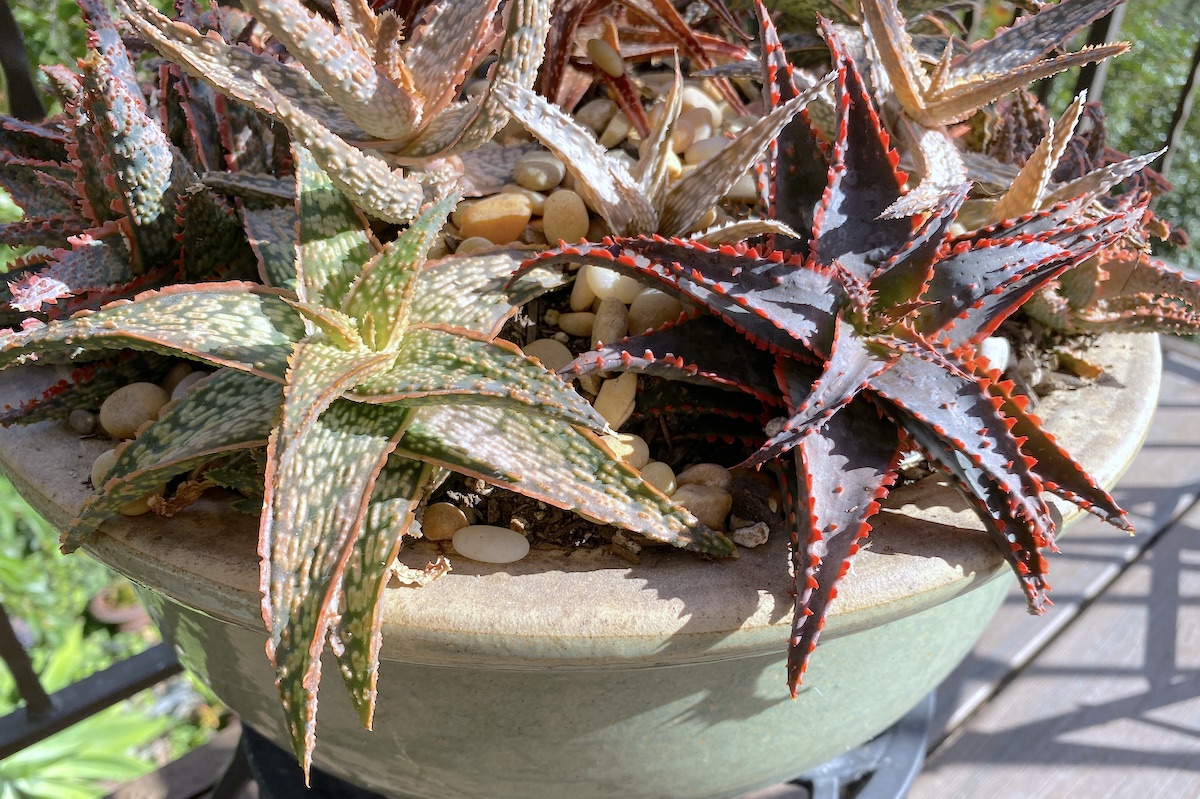
Dwarf aloe cultivars
create Visual Interest
About half of my deck pots are elevated on some sort of a stand rather than sitting on the floor. Garden centers often have an assortment of ornamental metal stands.
I place small potted succulents where guests will see them when seated. I want the plants to be so interesting that even people who aren’t into gardening want to know about them.
Below: I splurged on the rippled pot in the foreground because I liked how it repeats the ridges of the euphorbias.

Euphorbia polygona grouping. Pot at left is by Joe Wujcik. Large rippled pot is by Mark Muradian.
I recently planted graptopetalum cuttings in a terra-cotta pot (upper right) that I bronzed and embellished decades ago. Learn more about these easy-care succulents on my graptopetalum page.
Delight Visitors
I like to include things that make people do a double-take, smile, laugh, or lean in for a closer look. On a shelf below the kitchen window are pots with faces. A little whimsy goes a long way, so I keep the collection understated. Contact paper on the shelf protects it.
Below: The shallow pot with handle-like ears came from the Succulent Café in Carlsbad, north of San Diego; it’s atop a metal stand that resembles bird legs from a thrift store. Flirting with it is a lady pot with donkey-tail hair.

Face pots on shelf
It's fun to include little discoveries. For example, a dark pot behind it makes the papery white spines of Tephrocactus articulatus stand out.

Tephrocactus articulatus (paper spine cactus)
Go Vertical
I took advantage of vertical space provided by a floor-to-ceiling post. On three of its sides (not the east side, which is too sunny), I attached flat-backed wall pots (sconces). They’re small and shallow, so I planted them mostly with cuttings.

Espostola melanostele in a wall pot
Also on the post are sansevierias and tillandsias, as well as an oddity I can’t bring myself to get rid of: a graptosedum that’s thriving on the tip of a shriveled, pendant 12-inch stem.
I hang feeders for finches, titmice, wrens and nuthatches. If I sit still long enough they ignore me and come and go. The feeders are ornamental bird cages. Not only are they decorative, and stand out because they’re white, people do a double take when they see wild birds eagerly entering cages.
A jade in a five-gallon black nursery pot serves as a blind so birds who visit the corner feeder, like doves and jays, feel less exposed. The jade had gotten top-heavy, so I strapped it to the deck railing.
plant care
I water with an expandable hose that doesn’t take up much room. I’m forever grateful for the person who built my house for having a hose bib on the deck. I water on average once a week, but there's no hard-and-fast rule. It depends on the size of the pot, the type of plant, and the weather.
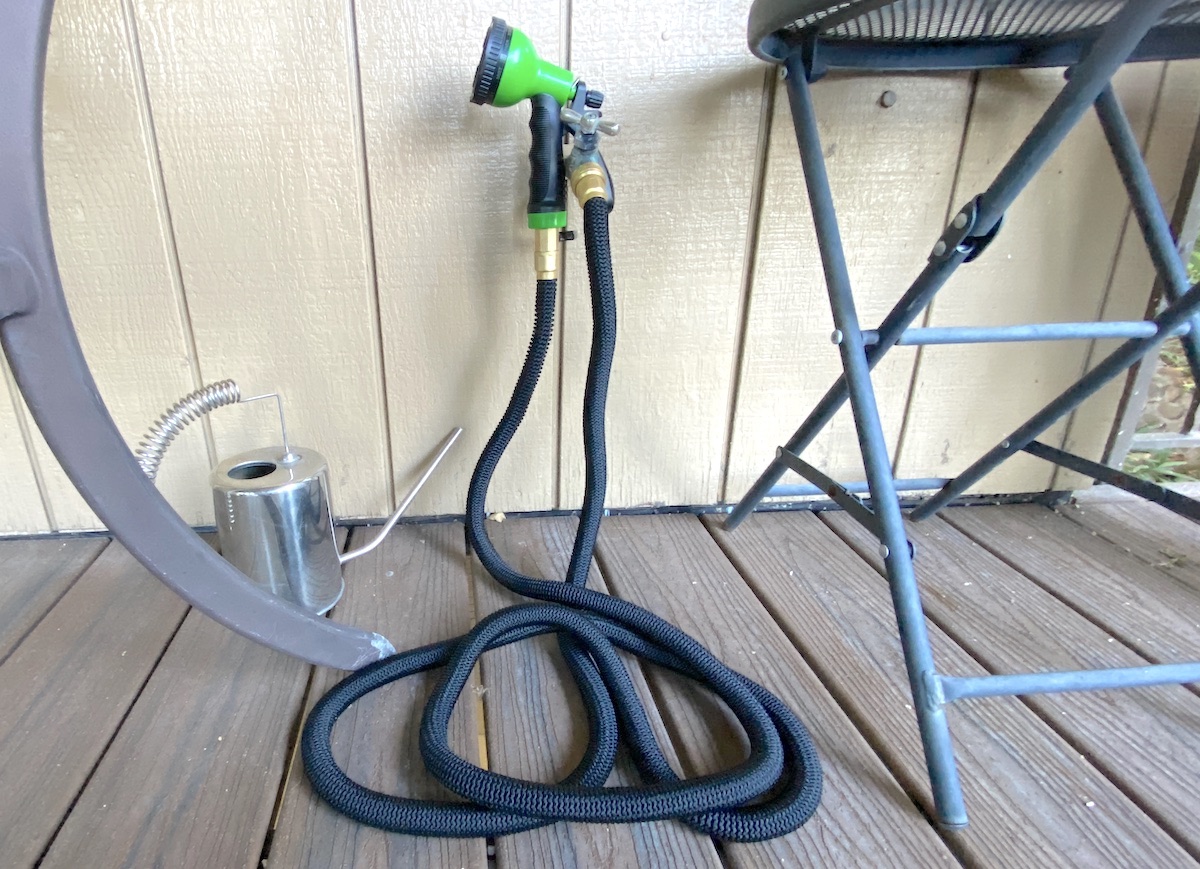
Expandable hose
Mealy bugs tend to be a problem in fall. On this site's Pests and Problems page, you'll find information on those and others to watch out for, and how to treat them.
find plants
Mountain Crest Gardens is a top mail-order supplier of small cacti and succulents. Much of my collection came from Oasis Water Efficient Gardens and Waterwise Botanicals nurseries, both in north San Diego County. Find them and many others in my list of Southern CA succulent specialty nurseries and destinations.
I hope you found new and useful ideas on this page and in the video. If you have succulent potting tips of your own to share, please do so in the Comments below!
Gallery
Related Info on this Site
Succulent Container Design
Succulent Container Design Design ideas and must-dos for beautiful, easy-care potted succulents Here you’ll find info on succulent container design in articles and videos. Scroll down to see what interests you and best meets your needs. Click to see my gallery of 150+ floral-style arrangements! Succulent Container Gardens, How-To Welcome to the most comprehensive info…
Got a Pot? Elevate it!
Potted plants look better atop stands. See how this time-honored Asian aesthetic applies especially well to succulents in art pots in my new video, above. It features San Diego designer Diana Clark, who created the plant-pot pairings shown here. As you look at them, ask yourself: Does the stand matter? Would the composition look just…
Plant an Echeveria Garden in Pots
Echeverias do great in containers, so why not plant an echeveria garden all in pots? Because echeverias have great color, symmetry and resemble fleshy flowers, my own potted collection suggests an exotic flower garden.

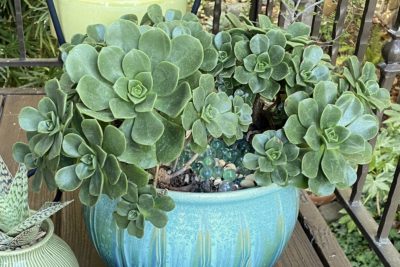




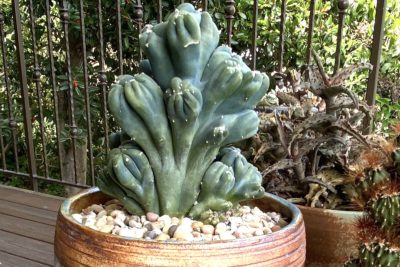
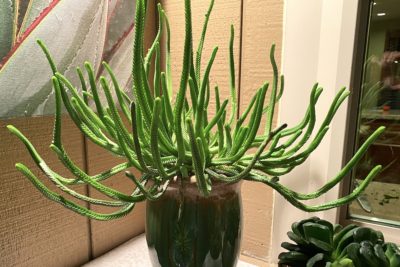

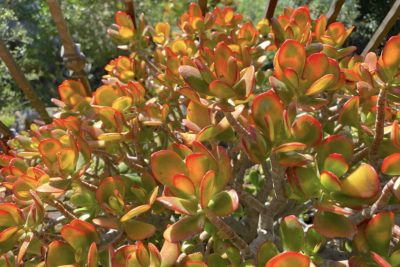


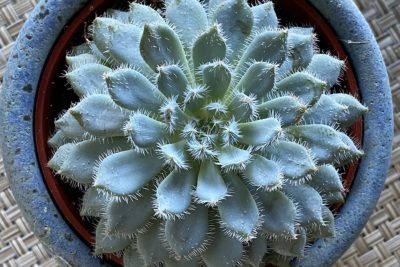
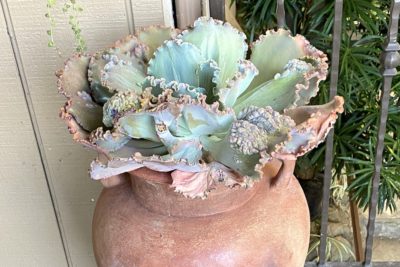

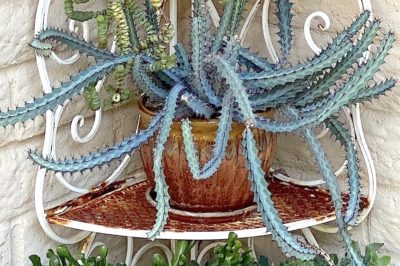












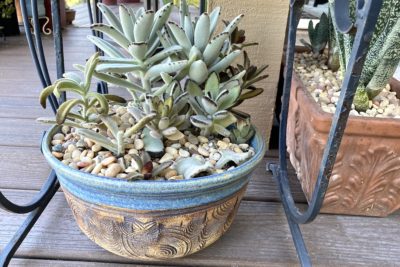

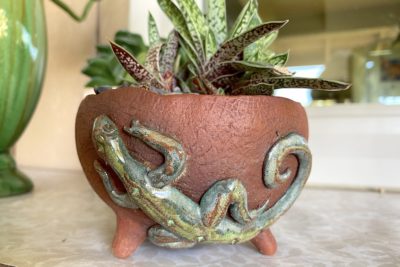



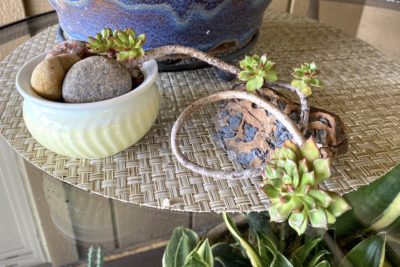


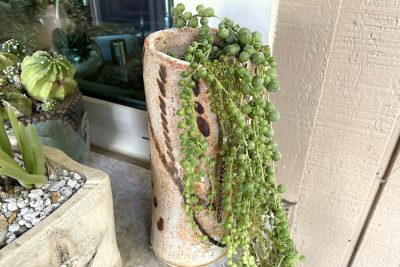





Whew! Enjoyed this video and am inspired to create more containers from my collection.( with new radar in my thrift store visits ! ) Using cuttings in the wall hanging planter is a good takeaway.
Hi Dixie! Thanks! Yes, thrift stores are wonderful sources of containers. You never know what treasures you might find. But sometimes the best ones don’t have drain holes…which is why I did a video on how to drill holes in nondraining containers. https://youtu.be/p9w8tSrx6to